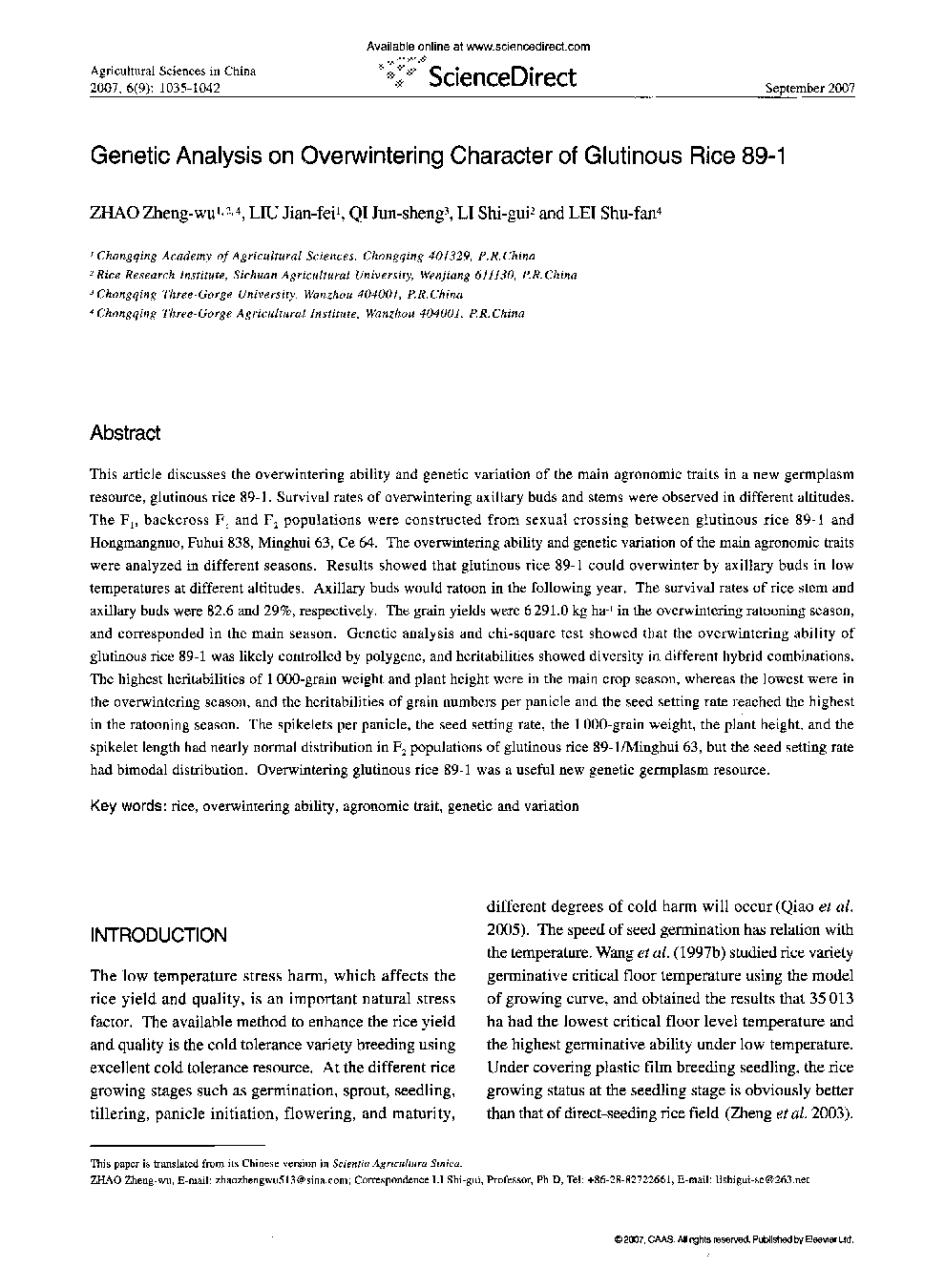| Article ID | Journal | Published Year | Pages | File Type |
|---|---|---|---|---|
| 4490753 | Agricultural Sciences in China | 2007 | 8 Pages |
This article discusses the overwintering ability and genetic variation of the main agronomic traits in a new germplasm resource, glutinous rice 89–1. Survival rates of overwintering axillary buds and stems were observed in different altitudes. The F1, backcross F1 and F2 populations were constructed from sexual crossing between glutinous rice 89–1 and Hongmangnuo, Fuhui 838, Minghui 63, Ce 64. The overwintering ability and genetic variation of the main agronomic traits were analyzed in different seasons. Results showed that glutinous rice 89–1 could overwinter by axillary buds in low temperatures at different altitudes. Axillary buds would ratoon in the following year. The survival rates of rice stem and axillary buds were 82.6 and 29%, respectively. The grain yields were 6291.0 kg ha−1 in the overwintering ratooning season, and corresponded in the main season. Genetic analysis and chi-square test showed that the overwintering ability of glutinous rice 89–1 was likely controlled by polygene, and heritabilities showed diversity in different hybrid combinations. The highest heritabilities of 1000-grain weight and plant height were in the main crop season, whereas the lowest were in the overwintering season, and the heritabilities of grain numbers per panicle and the seed setting rate reached the highest in the ratooning season. The spikelets per panicle, the seed setting rate, the 1000-grain weight, the plant height, and the spikelet length had nearly normal distribution in F2 populations of glutinous rice 89–1/Minghui 63, but the seed setting rate had bimodal distribution. Overwintering glutinous rice 89–1 was a useful new genetic germplasm resource.
